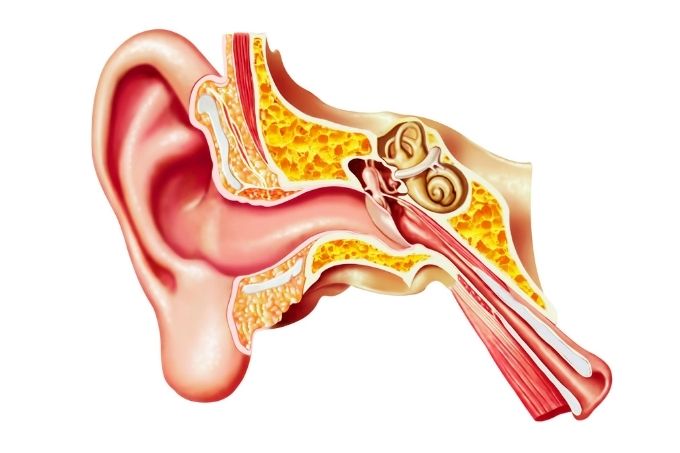
Have you been experiencing sudden vertigo attacks lately? While most of these go unexplained, medical experts have put forward a few underlying causes, one being the dislocation of crystals in the inner ear. Most of us may ignore this as a fallacy, but there are instances where you need to find out solutions on how to prevent ear crystals from getting dislodged to avoid serious implications.
Ear crystals: Medical definition
Ear crystals are medically explained as minute, calcium carbonate structures lying midway between the hearing and balance branches of the inner ear. These are normally present within a gelatinous surrounding (canaliths) and should ideally remain confined to the same. If due to any cause, these crystals undergo a displacement; this may affect the physiological balance and sense of hearing.
Common displacement symptoms
Dizziness
This is the commonest of all symptoms that alarms you of a possibility of crystal dislocation. An obvious debate can arise here that dizziness is a signal to a variety of other health concerns, that’s true, of course, but dizziness due to loose or floating ear crystals is quite different.
Dislocated crystals may cause you to feel dizzy in almost everything you do or every movement you make (even the casual ones of basic locomotion and natural physical reflexes), generally lasting for about half a minute or so. What makes it worrisome is the dizziness is often accompanied by a constant feeling of weakness or being sick and may bounce back every time you try to move.
Suggested articles:
– Dizziness when Bending Over – The List of 12 Causes
– Dizziness when Standing – 8 Potential Causes and Preventive Steps
Vertigo
Explained in the most common terms, vertigo is a condition where your dizziness crosses bounds of severity and frequency. Cases report a frequency range of 3-6 attacks in vertigo patients per day, depending on the severity of the underlying cause (crystal displacement being just one among the others).
Experiencing vertigo may cause you to feel a spinning of your surroundings (even during static body postures, like, sitting or standing) and hamper your physical balance. These attacks may last from a few minutes to hours, according to the reason behind their occurrence. Visit your doctor when they go over the line. However, vertigo shot longer than 2 hours needs immediate medical attention.
Suggested articles:
– Vertigo vs Dizziness – The Difference Between Vertigo and Dizziness
– Peripheral Vertigo – Causes, Diagnosis, Symptoms, Treatment
– Benign Paroxysmal Positional Vertigo (BPPV) – Symptoms & Treatment
Nausea
Another common symptom of ear crystals getting loose is an urge to throw up or feel nauseated. This is because a proper alignment of ear crystals is necessary for effective sync between your brain and physical system.
When these crystals fall out of place, they begin to float in the gelatin mass and cause ripples, which may result in miscoordination between your nervous system and body parts, causing the brain to receive mixed signals. This makes it difficult to perceive motions, and you may have a sensation of making confused movements.

Remedies to prevent future dislodging of ear crystals
When thinking about how to prevent ear crystals from dislodging, it is relieving to know that treating loose crystals is not a hard nut to crack. The prime goal is to push back the floating crystals to the canaliths. You can take up some continent posture practices to stop future acquaintances of the problem.
As the first step to address the cause, you need to identify the location of the issue, that is, which one of the two ears has encountered a dislodging of crystals. You can conveniently figure this out at home, but it is advisable to visit your audiologist, just in case you don’t end up worsening the issue with mis-conceptual handling.
Described below are effective methods to diagnose and treat ear crystal fallouts:
Dix-Hallpike Test
To perform this test, your doctor asks you to sit straight for a few seconds, followed by changing to the supine position. Being in this position, you are asked to tilt your head to one side (left or right), making a 45-degree angle, and lean back to around 65 degrees. Now, your doctor observes consequent eye movements for about half a minute to check on any signs of Nystagmus.
Following this, you need to sit upright once again, and the process is repeated for the other side after a delay of 30 seconds. For patients suffering from neck arthritis, the test may be performed in a side-lying posture.
Getting a positive result for this test is guaranteed by considerable jumping and roll-out eye movements. In cases of Benign Paroxysmal Positional Vertigo, you may even observe a twist in the eyes from top to bottom.
Epley Maneuver
This treatment will require you to sit upright and tilt your head to one side at a 45-degree angle and lie down while maintaining this position. After a lapse of 30 seconds, turn to the other side at a 90-degree angle and again wait for half a minute to sit straight.
For effective results, it is recommended to practice the maneuver regularly, at least twice a day, till you cross 3 days without having any potential symptoms (dizziness, vertigo, etc.).
Canalith Repositioning Procedure
Benign Paroxysmal Positioning Vertigo (BPPV) is a common consequence of the displacement of canaliths, the inner ear crystals. When suffering from this and wondering how to prevent ear crystals from getting dislocated, you can go for Canalith Repositioning Procedure (CRP). This one is a physical treatment where you are required to make a set of changing head movements to push the floating crystals back to the semicircular canal, where these are originally formed.
Dislocation of ear crystals is a rather casually treated issue but should be given considerable attention, owing to the fact that its consequences are impeccable. From frequent positional imbalances to a total or partial hearing loss is what you could possibly encounter on prolonged persistence of the cause.
Final thought
Talking of how to prevent ear crystals take up a distorted alignment, there are vague answers to the question. You may, however, focus on solutions to control the dislocation to cross the line in the future. While it is possible to execute remedies at home, taking expert help is recommended.
Suggested articles:
– Fluids Behind Eardrum and Dizziness – Is it a Sign of Concern?
– 7 Foods to Avoid with Vertigo
– Can Earplugs Cause Vertigo?
– Can Hearing Aids Cause Vertigo? – Everything You Need to Know
– Vestibular Disorder – Issues of the Vestibular System



